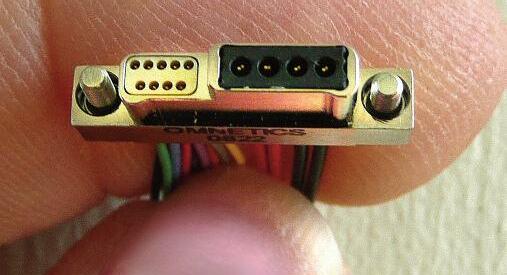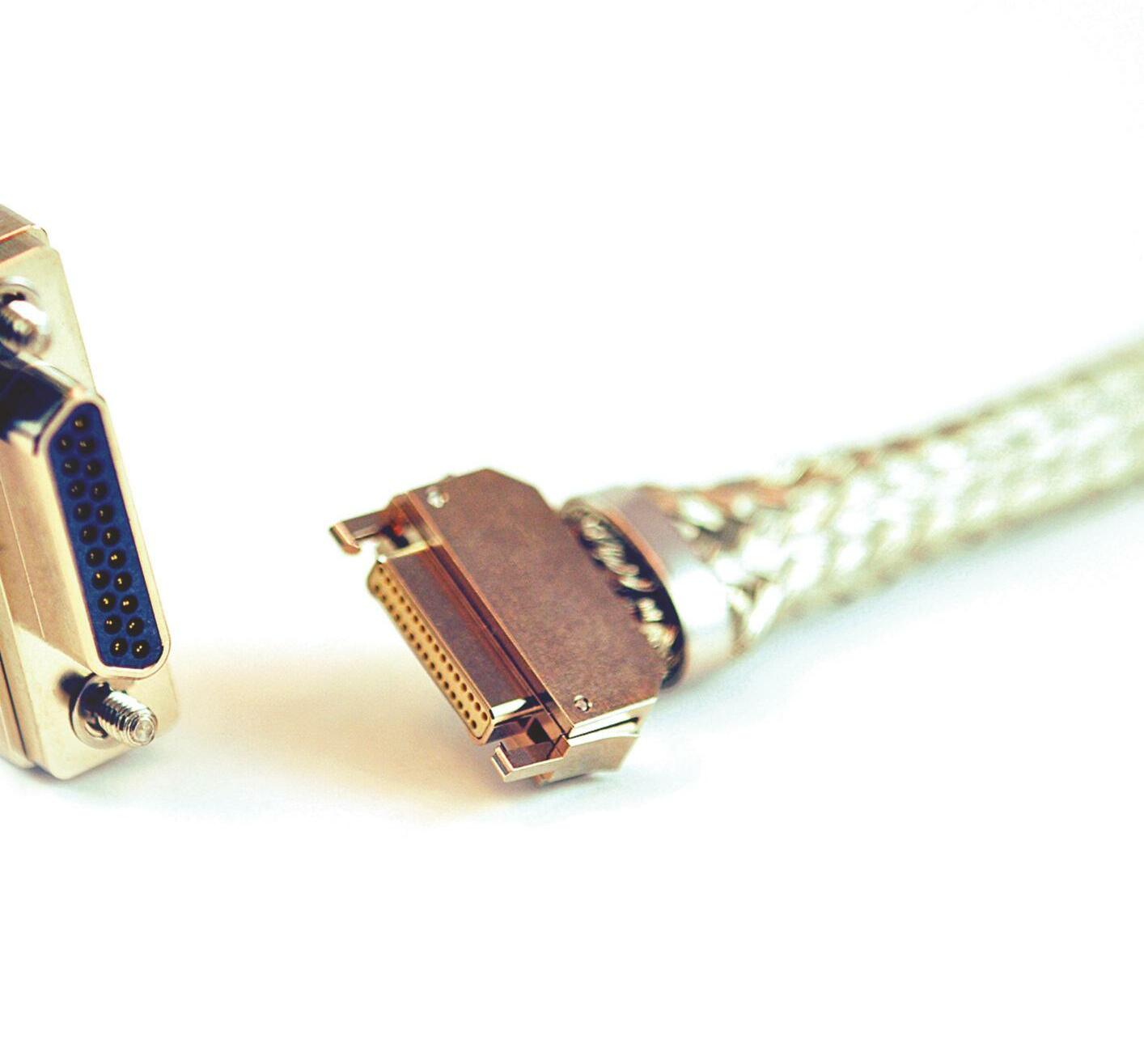
4 minute read
Omnetics - Nano connectors & cables serve modernized rugged electronics
nano connectors & cables serve modernized rugged electronics
high speed signal technology is being adapted everywhere possible to serve defense, space, medical and commercial circuits.
Portability and outward utilization of sensor and detector chip technology has pushed the envelope as well as the functionality of today’s circuitry. with sense and detection chip systems we are placing devices in and on highly active and portable devices. Signal acquisition and data processing is being done more at the source for accuracy and speed. The data is then being routed by cable to motor-drives, displays and or data collection libraries. Circuits and chip technology operate at 5.0 volts and less while current flow is going below 200 millivolts to sometime microvolts. Insulation voltages will be less than 50 volts in many cases. we see examples daily in circuits designed into unmanned vehicles, drone swarms or cube satellites. remote controlled defense equipment from space to air to ground based rovers all depend on the newer circuit technologies for both electronic performance as well as mechanical resilience. Fortunately, interconnect solutions are ready and available. The nano-D has become today’s reference for smaller, lightweight and rugged interconnections that can handle up to 30 AwG Teflon® insulated wiring. The nano-D standard is set with a pin to pin spacing of .025” center line system compared to Micro-D spacing at .050” pitch. The nano-D connector is available in formats that support PC board mounting in surface mount technology, thru-hole and edge card assembly as well as various wiring versions. The amazing thing about this nano-D is it performs in rugged conditions and offers improved signal support.
It’s worth noting that Omnetics nano connectors are tested beyond the military standard specifications to insure performance beyond today’s view of circuit applications. Although the standards specification calls for at least 200 mates and de-mates, the nano-D uses 17,200 ksi tempered BeCu spring-pin to socket interface that can be mated and un-mated over 2000 times. The connector resistance runs from 12 to 15 milliohms and only has a very low capacitance of 2.0 pf to 2.4 pf. These specs are ideal for the new higher speed, lower voltage signals they are supporting. we remember that as signal speeds increase, the wavelength of each signal is shorter and potentially more vulnerable to capacitance as well as shock and vibration. As signal speed continues to increase, the specialty designs will perform by increasing the distance from pin to pin within the connector insulator housing.


circuit speeds in the gigahertz range. wiring systems of yesterday have been tested and proven in their rugged performance and many of them could be speeded up to meet the higher speed demands. But the needs have changed in many other ways; battery life has become a factor, cable diameter must be smaller and the wiring should have a rugged limpness and perform small bend radius when used in constant motion robotic devices, as well as be light weight to reduce drag on the electrical system.
Smaller connectors and smaller diameter wires place a demand on the cable design to avoid EMI from adjoining wiring or systems. Cable designs must include good shielding for each area of signal within the cable and may have two or three sections isolated from one another as well as an over-all shield system. This often happens as multiple applications are squeezed into tightly packed electronics. Special cable are often required and should be designed in concert with the Interconnection Engineer on the project. In addition to over-all cable shielding, complete EMI protection is accomplished to insuring a 360-degree cable shield to the metal connector at each end of the cable assembly. This allows a bleed-off path for any lingering electrical signal noise to be routed from the cable jacket to ground.
Standard nano-D connectors are often readily available to meet many standard nano circuit design needs as there is a large variety of form and format to match PC to panel mount, to edge card and onto cable to cable interfaces. however, some new systems require unique modifications to the current standards. They must meet all the electrical and rugged application standards but need also to be in different shapes or even include mixed signal options. For instance, including combinations of power or mixed signals within a cable, the system can be more compact. quick adjustments to current standard nano-D connectors are available as a modified standard process. Designers can contact the connector supplier and work together online using solid models to adjust shapes and cable loading but retain the quality and reliability of the standard design. This can significantly save development time and money while accomplishing an application specific interconnection for the new application.

Omnetics' Nano-D to Micro-D
Omnetics Connector Corporation








